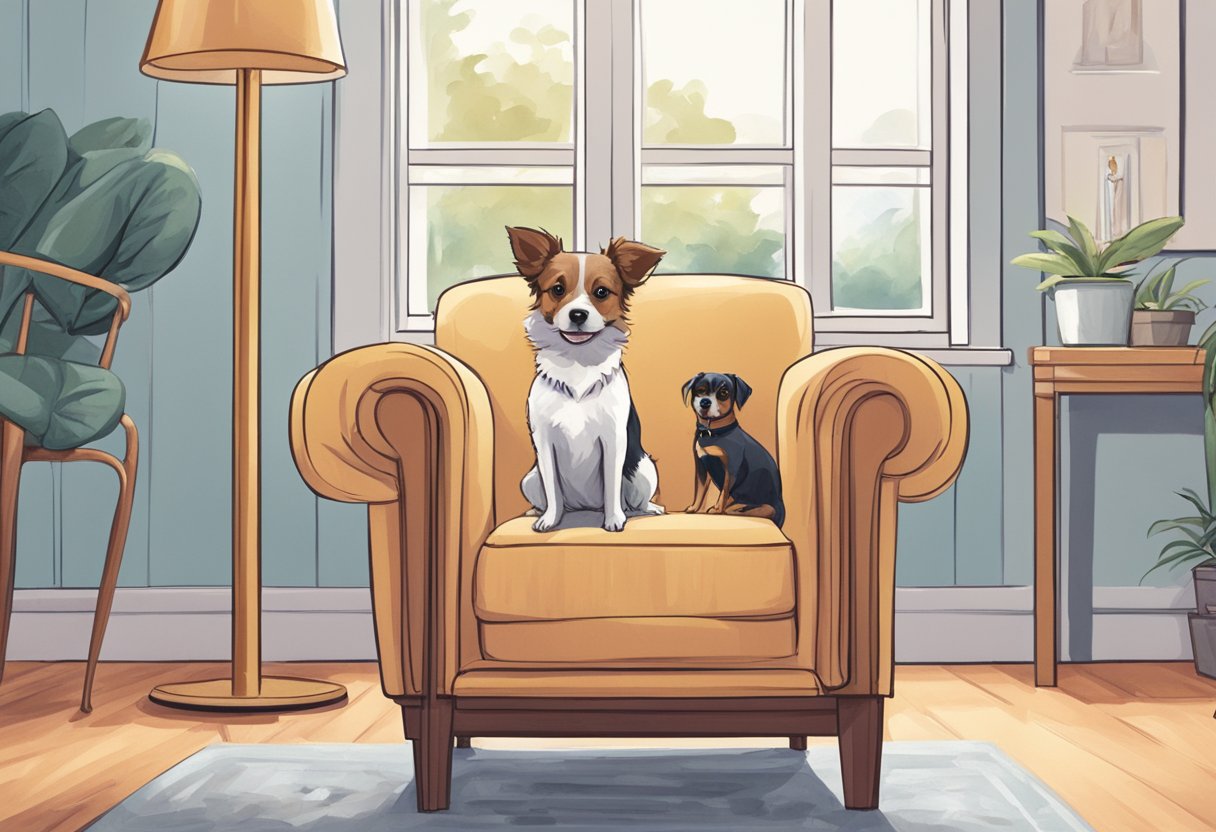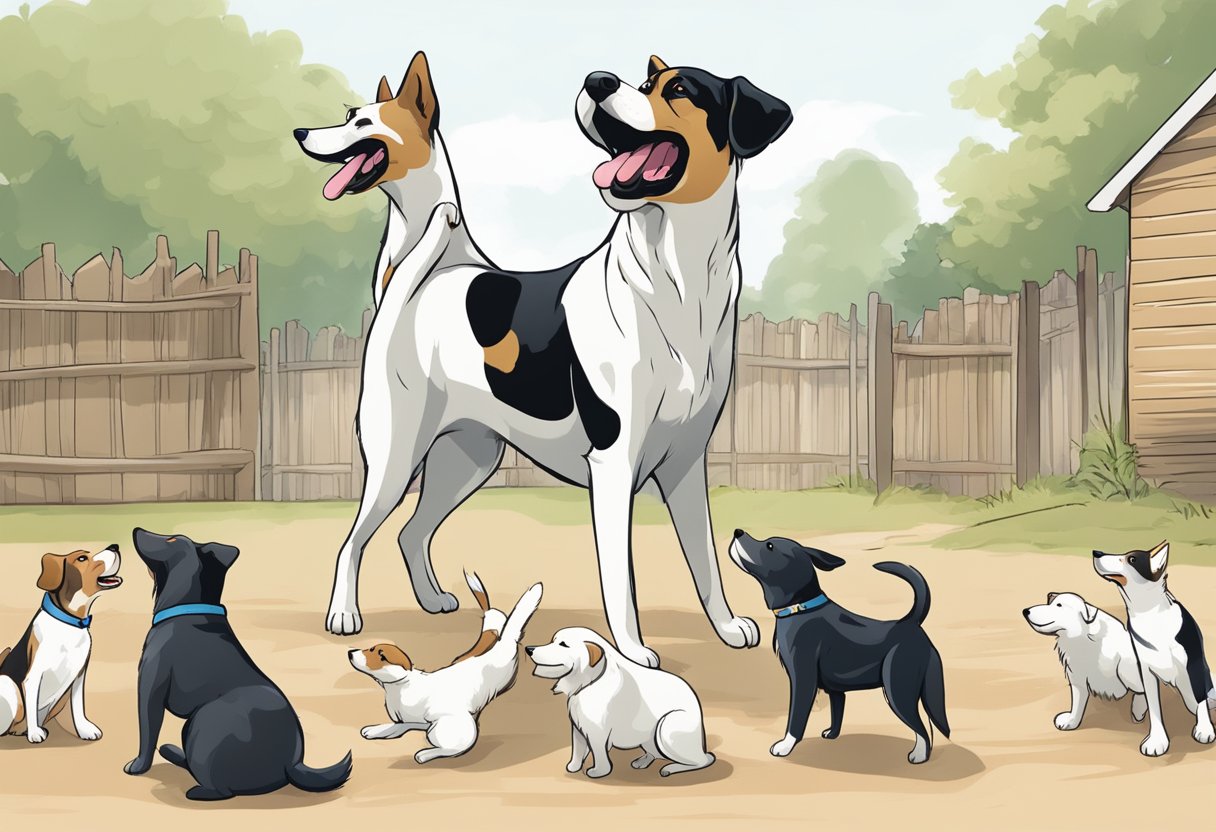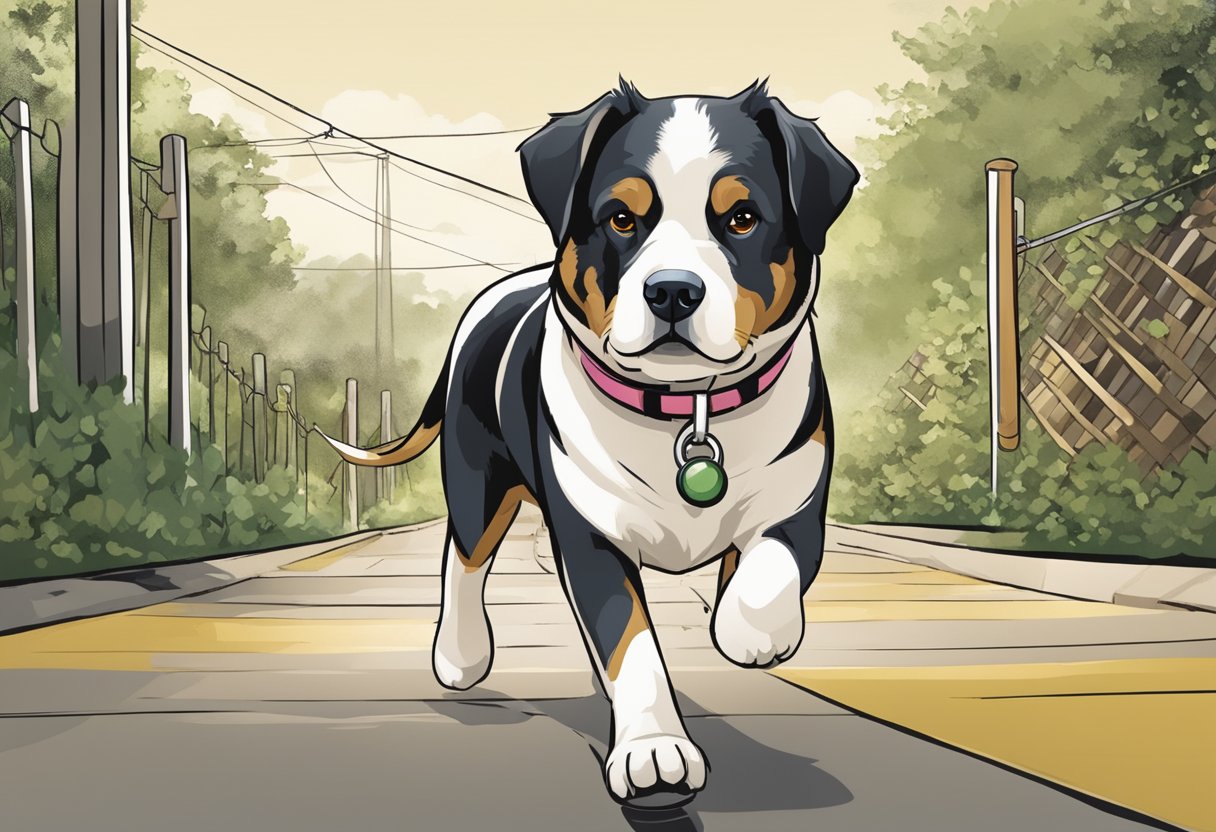Many dog owners may not realize that their pets often exhibit behaviors indicating a strong sense of authority within the household. Dogs, like humans, can develop leadership traits that manifest in various ways. Recognizing these signs can help owners understand their dogs better and adjust their training methods accordingly.
These behaviors can range from simple demands for attention to more complex actions that assert control over their environment. Owners must observe their dog’s habits and interactions to determine if their pet believes they hold a dominant position. Awareness of this dynamic is crucial for fostering a healthy relationship between the dog and its owner.
1) Ignoring commands

When a dog consistently ignores commands, it may indicate a sense of authority. This behavior often shows that the dog believes it can choose when to follow instructions.
It’s common for dogs to test boundaries. If they disregard commands like “sit” or “stay,” it may suggest they feel secure in their position within the household hierarchy.
Training methods that lack consistency can contribute to this behavior. If a dog receives mixed signals, it may become less responsive to commands.
Additionally, dogs might ignore commands if they don’t see a reward or incentive. Understanding what motivates the dog is key to encouraging better listening skills.
In such cases, reinforcing positive behavior with treats or praise can help establish clearer lines of communication. Owners should observe their dog’s behavior closely to address any underlying issues.
2) Claiming the best seat in the house

When a dog consistently chooses the best spot in the house, they may see themselves as the leader of the pack. This behavior often reflects their desire for comfort and control over their environment.
Dogs may gravitate toward the coziest chair or the prime location on the couch. By doing so, they assert their dominance within the home.
If a dog regularly shifts their owner from a favorite seat or lounges in areas designated for people, it can signal confidence. Such actions indicate that the dog feels secure in their territory and recognizes their role.
3) Demanding attention at all times

Dogs that believe they are in charge often demand constant attention. They may follow their owner around the house, seeking interaction at every opportunity. This behavior can disrupt daily activities and routines.
If a dog barks, nudges, or paws at their owner repeatedly, it signifies a push for engagement. This can indicate that the dog expects the owner to prioritize their needs.
The frequency and urgency of these demands can suggest a lack of boundaries. A dog that thinks it’s the boss may feel entitled to intrusive behaviors to gain attention.
Consistent responses from the owner can reinforce this behavior. If a dog receives attention when being demanding, they will likely continue this pattern.
4) Barking for no reason

Dogs communicate through barking, and a sudden outburst with no apparent cause can indicate a need for attention or control. If a dog frequently barks seemingly without reason, it may be asserting dominance in the household.
This behavior can stem from boredom, anxiety, or the desire for interaction. Dogs often bark to fill silence or when they feel they are not receiving enough engagement from their owners.
It’s essential to observe the context of the barking. If it occurs when they are alone or during quiet times, it may reflect their need to maintain order in their environment. Recognizing this pattern can help owners address the underlying issues effectively.
5) Refusing to share toys

When a dog refuses to share toys, it may indicate a strong sense of ownership. This behavior can manifest when the dog guards their toys from other pets or even humans.
Dogs often view their toys as valuable resources. If they growl, snatch, or move away with their toys when another dog approaches, they may believe they are in charge.
The refusal to share can also extend to games with their favorite objects. A dog that consistently pulls away a toy or becomes possessive during playtime may be asserting dominance.
In some cases, this behavior is rooted in insecurity. A dog may feel that sharing diminishes their status, leading them to retain control over their possessions.
6) Dragging you during walks

When a dog pulls on the leash during walks, it often indicates a sense of control. Instead of walking beside their owner, they may lead the way, eager to explore.
This behavior can stem from excitement or confidence. Some dogs feel empowered when they are ahead, which can make walks more challenging for their owners.
If a dog consistently drags their owner, it may signal a lack of training or boundaries. Dogs that believe they are in charge may feel they can dictate the pace and direction of the walk.
Addressing this behavior requires consistent training. Teaching commands like “heel” can help reinforce proper walking manners, allowing for a more enjoyable experience for both the dog and the owner.
7) Guarding resources possessively

Dogs often exhibit possessive behavior when they feel the need to protect their resources. This can include food, toys, or even their resting spaces.
When a dog guards resources, it may display signs such as growling, snapping, or preventing others from approaching. This behavior indicates a belief that they should control access to these items.
Possessive guarding can be more pronounced in certain breeds or individual dogs. It’s crucial for owners to understand these signals to prevent potential conflicts.
Training can help manage resource guarding behavior. Positive reinforcement techniques can teach dogs that sharing is safe and rewarding. Consistent, calm approaches work best in addressing this issue.
8) Taking over the bed

When a dog claims the bed as their own, it often indicates a sense of authority. This behavior signals that they feel comfortable asserting dominance in their living space.
Dogs may enjoy sprawling out in the center of the bed, pushing their owners to the edges. This demonstrates their belief that they hold the prime position.
Additionally, dogs may guard the bed, growling or showing defensiveness if someone approaches. This protective behavior can further suggest that they view the bed as their territory.
If a dog refuses to move when asked, it reinforces the idea that they consider themselves in charge. Owners may find it challenging to reclaim their space despite repeated requests.
Ultimately, taking over the bed can affirm a dog’s perception of their role in the household hierarchy. It serves as a clear indication of their confidence and established authority.
Understanding Canine Hierarchy

Canine hierarchy plays a crucial role in dog behavior. Recognizing how dogs perceive their social structure can provide insight into their actions and attitudes within the household.
The Alpha Dog Concept
The concept of an alpha dog stems from early interpretations of wolf behavior. Initially, researchers believed that a strict hierarchy existed, with a singular dominant figure leading the pack. This idea has evolved; modern canine studies show that social structures in wolves and dogs are more fluid and based on cooperation rather than strict dominance.
In domestic settings, dogs may exhibit dominant behaviors when they feel in control. For example, they might take charge during play or assert themselves over resources like food and toys. It’s essential for owners to establish leadership through consistent training and clear boundaries.
Natural Pack Behavior
Dogs are naturally pack animals, which influences their social interactions. In a pack, roles can vary, and relationships often form based on mutual benefit rather than domination. Dogs assess social dynamics through body language and vocalizations, allowing them to gauge their position within a group.
A dog’s behavior may indicate its perception of hierarchy. For instance, a dog that constantly seeks attention and exhibits controlling behaviors may believe it holds a higher rank. To encourage balanced behavior, owners should engage in activities that promote collaboration and respect, ensuring that the dog understands its place within the family unit.
Training and Setting Boundaries
Establishing training methods and boundaries is essential for maintaining authority in the relationship with a dog. Clear leadership roles and effective communication are key to ensuring that a dog understands its place in the household.
Establishing Leadership Roles
To establish leadership, consistency is crucial. Owners must be firm yet kind, setting clear rules that define what behaviors are acceptable.
- Routine: Dogs thrive on routine. Regular feeding, walking, and playtimes create predictability.
- Positive Reinforcement: Reward good behavior with treats or praise. This reinforces desired actions and helps the dog understand expectations.
- Training Sessions: Incorporate short, frequent training sessions. This keeps the dog engaged and helps reinforce the owner’s leadership.
It is vital for the owner to remain calm and assertive, displaying confidence. Dogs often mirror emotional states, so a confident demeanor helps reinforce authority.
Effective Communication Techniques
Communication with a dog must be clear and consistent. This includes both verbal commands and body language.
- Simple Commands: Use a few key commands like “sit,” “stay,” and “come.” These should be taught and practiced regularly.
- Body Language: Dogs are highly perceptive to body language. An upright posture and steady gaze can convey authority.
- Consistent Tone: Use a firm and consistent tone for commands. Avoid high-pitched tones when giving directions, as these can dilute authority.
Regular practice of these techniques encourages the dog to respect boundaries. With patience and consistency, dogs can learn the limits set by their owners.



